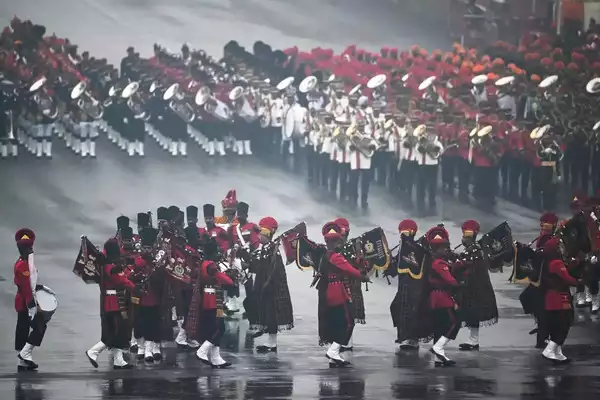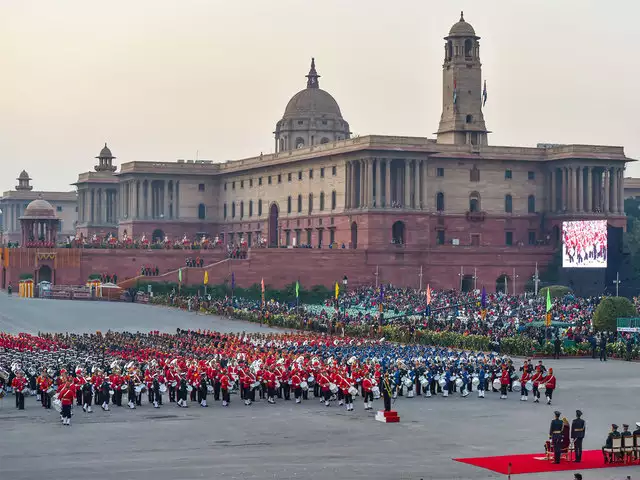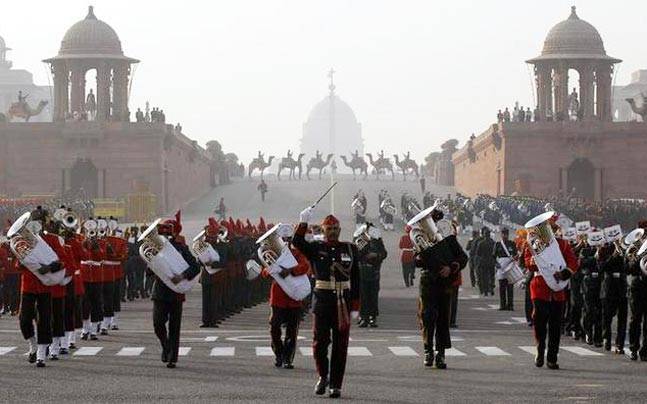The Beating Retreat ceremony in India is typically held on the evening of January 29th, three days after Republic Day on January 26th. This annual ceremony takes place at Vijay Chowk in New Delhi, near the Rashtrapati Bhavan (Presidential Residence) and India Gate. It marks the official end of the Republic Day celebrations and is a grand musical and military event featuring performances by the bands of the Indian Army, Navy, and Air Force. The ceremony is known for its colorful and spectacular display of lights, music, and precision drill movements. It is attended by dignitaries, foreign diplomats, and the general public.

The Beating Retreat ceremony holds great relevance in the context of India’s cultural and military traditions. Here are some key aspects of its relevance:
- Symbol of Tradition: The Beating Retreat ceremony is a centuries-old military tradition that dates back to the days when troops returned to their barracks after a day of battle. The ceremony symbolizes the end of the working day for the military and the return to the safety of the barracks.
- National Pride: The ceremony showcases the rich cultural heritage and military prowess of India. It is a display of precision, discipline, and coordination among various branches of the armed forces. The colorful and grand spectacle instills a sense of national pride and unity among the spectators.
- Republic Day Celebration: The Beating Retreat ceremony is an integral part of India’s Republic Day celebrations, which mark the day when the Indian Constitution came into effect on January 26, 1950. It serves as a reminder of the values and principles enshrined in the Constitution.
- Musical Extravaganza: The ceremony features performances by the bands of the Indian Army, Navy, and Air Force. It includes a wide range of music, from patriotic tunes to classical compositions, showcasing the diversity of India’s musical heritage.
- Tribute to Martyrs: The ceremony pays homage to the brave soldiers who have sacrificed their lives in the service of the nation. The sounding of the Last Post is a solemn moment to remember and honor the fallen heroes.
- Diplomatic Relations: Beating Retreat is attended by dignitaries, foreign diplomats, and other guests. It serves as a platform for diplomatic interactions and symbolizes India’s commitment to peaceful coexistence with other nations.
- Cultural Exchange: The Beating Retreat ceremony often includes international bands and guest performances, promoting cultural exchange and strengthening diplomatic ties with other countries.
- Showcasing Military Strength: The precision drill movements and the display of military equipment during the ceremony showcase the strength and readiness of India’s armed forces.

In summary, the Beating Retreat ceremony is not just a display of military pageantry but also a celebration of India’s cultural diversity, a tribute to its martyrs, and a symbol of national pride and unity. It reflects the values, traditions, and aspirations of the nation.



